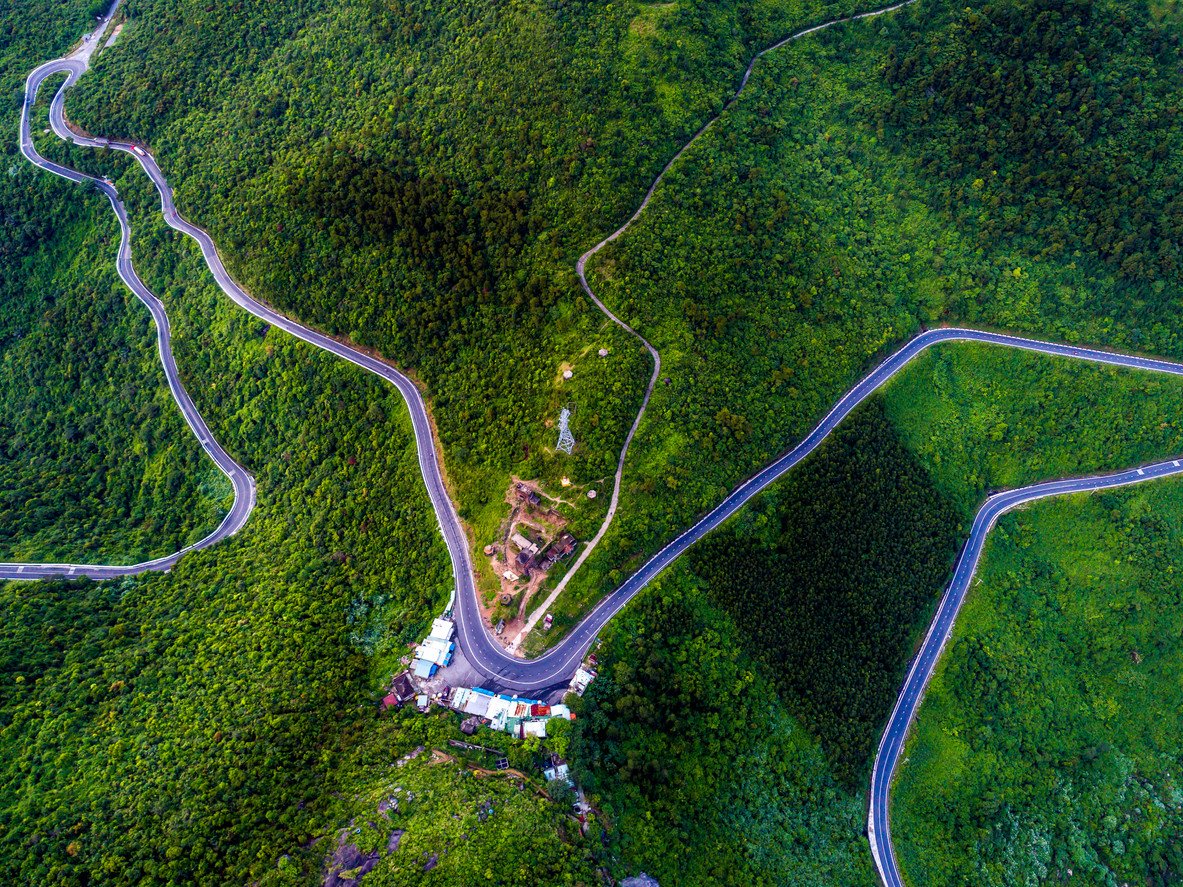
Embark on a remarkable journey along the Hai Van Pass, a legendary mountain road that winds its way through the majestic Truong Son Mountain Range in central Vietnam. Renowned for its panoramic vistas, sharp bends, and historical significance, the Hai Van Pass offers an unforgettable adventure for travelers seeking breathtaking natural beauty and a glimpse into Vietnam’s rich cultural heritage.
Prepare to be captivated by the awe-inspiring scenery as you traverse the Hai Van Pass. Towering mountains, lush green forests, and cascading waterfalls create a dramatic backdrop against the sparkling turquoise waters of the East Sea. From the winding road, you’ll witness spectacular vistas at every turn, providing endless opportunities for photography and moments of pure admiration.
The Hai Van Pass holds great historical significance, having served as a natural boundary between the ancient kingdoms of Champa and Dai Viet. It also played a crucial role during the Vietnam War, acting as a strategic military route. Today, remnants of the past can still be seen, including old bunkers and fortifications that stand as testament to the area’s historical importance.
As you journey along the Hai Van Pass, be sure to stop at some of its iconic landmarks. The Hai Van Gate, an ancient stone archway, marks the boundary between the provinces of Thua Thien-Hue and Da Nang. Take a moment to appreciate the craftsmanship and intricate carvings that adorn this historical gateway.
Located at the base of the Hai Van Pass, Lang Co Beach offers a tranquil escape from the winding road. With its pristine white sands and crystal-clear waters, the beach provides a perfect spot to relax and soak up the natural beauty of the region. Take a dip in the refreshing sea, savor freshly caught seafood at local restaurants, or simply bask in the serenity of this idyllic coastal paradise.
Reaching the summit of the Hai Van Pass is a highlight of the journey. Pause to take in the breathtaking panoramic views that stretch as far as the eye can see. Marvel at the contrasting landscapes of mountains and sea, with the bustling city of Da Nang on one side and the tranquil countryside of Hue on the other. On a clear day, you may even catch a glimpse of the Cham Islands dotting the horizon.
For the ultimate adventure, consider exploring the Hai Van Pass on two wheels. Rent a motorbike or join a guided motorbike tour for an exhilarating ride along the winding road. Feel the cool breeze on your face as you navigate the sharp bends, immersing yourself in the sights, sounds, and scents of the surrounding nature. This thrilling experience allows you to appreciate the pass’s beauty up close and at your own pace.
If you prefer a more leisurely pace, opt for a car or bicycle journey along the Hai Van Pass. Enjoy the freedom to stop and admire the views at your leisure, and take advantage of the various viewpoints along the way. The journey by car or bicycle allows you to fully appreciate the natural wonders and immerse yourself in the tranquillity of the mountains.
Embarking on a journey along the Hai Van Pass is a thrilling adventure that immerses you in the breathtaking beauty of central Vietnam. From its panoramic vistas and historical significance to the tranquil beaches and charming coastal towns, this mountain road offers a unique and unforgettable experience. Whether you choose to travel by motorbike, car, or bicycle, the Hai Van Pass promises an exhilarating journey through nature’s wonders, leaving you with memories to cherish for a lifetime.
Subscribe to see secret deals prices drop the moment you sign up!
